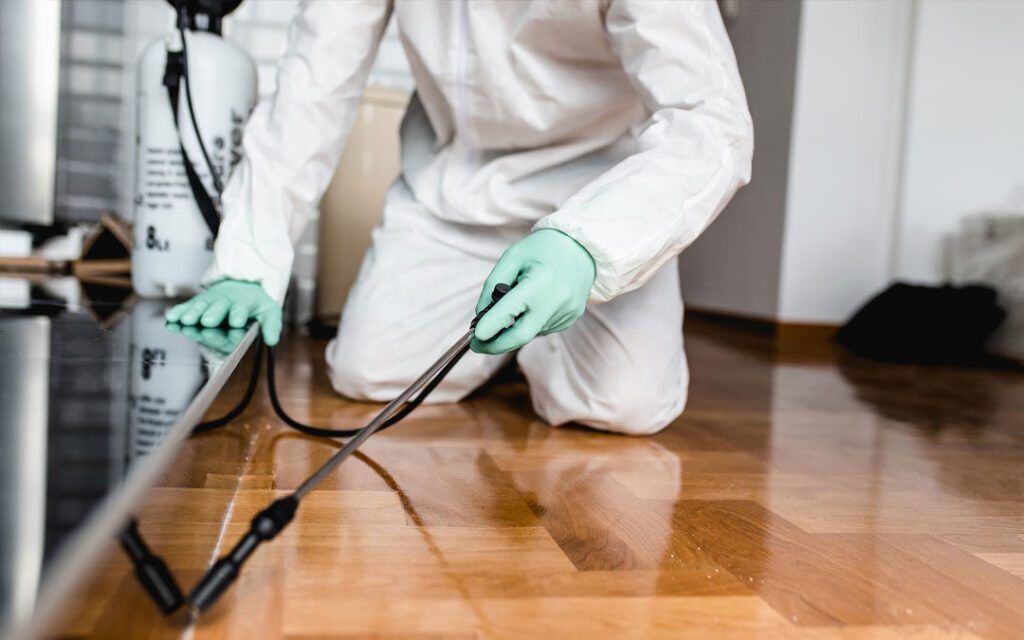Reliable Pest Control Chicago: Trusted Professionals for Your Home or Organization
A Comprehensive Overview to the Different Kinds Of Bug Control Methods
With the myriad of insect control approaches available, it can be frustrating to locate the most efficient solution for a certain bug trouble. In this comprehensive guide, we will check out these different types of insect control approaches, using understandings into their applications and benefits. By the end, you will certainly have a clearer understanding of which technique might be the finest fit for your insect control requirements.
Chemical Pest Control Techniques

One typical kind of chemical parasite control is insecticides. Pesticides are chemical compounds that are specifically created to kill or fend off pests. They can be applied in various types, such as sprays, baits, or cleans. Insecticides target particular pests, such as mosquitoes, termites, or ants, and can be made use of both indoors and outdoors.
One more type of chemical insect control is rodenticides. These are chemical substances created to manage populations of rats, such as rats and mice.
Herbicide, likewise referred to as herbicides, are one more sort of chemical insect control approach. Herbicides are designed to precisely kill undesirable plants, known as weeds, without causing harm to desirable plants. They are typically made use of in agriculture, landscaping, and gardening to regulate the development of unwanted vegetation.
While chemical bug control approaches can be highly reliable in eliminating parasites, it is important to utilize them deliberately and comply with security guidelines. Overuse or abuse of chemical pesticides can have adverse influences on human health and wellness and the setting. It is vital to utilize these approaches properly and consider different pest control strategies whenever possible.
Organic Insect Control Approaches
Organic pest control techniques involve using living microorganisms or natural substances to take care of and regulate pest populations. Unlike chemical methods, which frequently count on synthetic chemicals, biological control methods utilize the natural enemies of insects to control their populaces. This approach is thought about even more eco-friendly and lasting, as it reduces using harmful chemicals and decreases the danger of pesticide resistance.
One commonly made use of biological parasite control method is the introduction of natural predators or bloodsuckers. For example, ladybugs are introduced to manage aphids, while particular wasp species are released to target caterpillars. These predators and bloodsuckers prey on insects, decreasing their numbers and protecting against infestations.
One more organic control technique is the usage of pathogens. Particular bacteria, infections, and fungis can be used to contaminate and eliminate particular insects. For example, the microorganism Bacillus thuringiensis is generally made use of to regulate caterpillars, as it generates contaminants that are deadly to these bugs.
Organic control techniques can likewise involve using scents or all-natural materials that interrupt the mating patterns of pests. By conflicting with their recreation, these techniques help to decrease pest populaces gradually.
While biological pest control approaches are usually efficient, they may call for longer durations to accomplish preferred results compared to chemical techniques. In addition, mindful factor to consider needs to be offered to the option and launch of natural enemies to prevent unintentional damage to valuable microorganisms or communities.
Physical Pest Control Approaches
To successfully manage and control pest populaces, different parasite control methods called physical pest control approaches are utilized. These approaches entail making use of physical obstacles, traps, or devices to avoid parasites from accessing or damaging building. One typical physical insect control approach is making use of displays or nets to maintain pests out of buildings or gardens. These displays are generally constructed from great mesh material that permits for air flow while avoiding pests from getting in. One more physical pest control technique is the setup of fencings or wall surfaces to maintain bigger pests, such as deer or rabbits, out of gardens or agricultural fields. These barriers physically obstruct the pests' accessibility to the location, reducing the potential for damage. Furthermore, traps and gadgets can be utilized to catch or drive away pests. For instance, sticky traps can be placed in areas where insects are a problem, and the insects become stuck to the adhesive surface. Ultrasonic devices can also be used to emit high-frequency noises that are undesirable to bugs, creating them to leave the area. Physical bug control techniques are an eco-friendly option to chemical pesticides, as they do not rely upon making use of harmful chemicals.
All-natural Insect Control Methods
All-natural bug control techniques provide a lasting and environment-friendly method to handling and getting rid of pests. These techniques focus on using all-natural compounds and biological representatives, reducing the requirement for chemical pesticides that can damage the environment and human health and wellness. Among the most usual natural insect control approaches is biological control. This includes presenting natural predators or bloodsuckers to other prey on or parasitize the bugs. Ladybugs are often introduced to yards to regulate aphid populations. One this content more all-natural approach is the use of repellents stemmed from plants. Specific plants, such as marigolds, lavender, and pepper mint, send out fragrances that fend off parasites like mosquitoes, flies, and ants. Furthermore, social control techniques can be employed to stop and handle insect invasions. This consists of appropriate sanitation, routine maintenance, and advertising biodiversity in the yard. Revolving plants, getting rid of yard debris, and encouraging natural killers can help avoid the accumulation of parasites. By adopting these natural insect control techniques, individuals and neighborhoods can properly handle bugs while minimizing the adverse effect on the setting and human wellness.
Integrated Insect Monitoring (IPM)
Integrated Insect Management (IPM) is an extensive and systematic method to pest control that incorporates numerous approaches and strategies to successfully take care of pests while reducing using chemical pesticides. IPM intends to keep pest populations below the economic injury degree by making use of a combination of cultural, organic, and chemical control approaches.
Social control methods involve modifying the environment to make it less beneficial for insects. This can include methods such as plant turning, correct hygiene, and using immune plant varieties. By producing negative problems for pests, cultural control techniques can significantly decrease insect populations.

Chemical control techniques are used as click over here now a last option in IPM. They entail the targeted and wise use pesticides to take care of parasite populations. Unlike traditional parasite control methods, IPM aims to decrease the use of chemical pesticides by using alternative approaches.
Integrated Pest Administration (IPM) is an aggressive approach that concentrates on long-term bug monitoring instead than counting solely on reactive actions. By integrating numerous control methods, IPM supplies an extra sustainable and eco-friendly technique to pest control.
Verdict
It went over chemical, biological, physical, and natural insect control methods, as well as the incorporated bug administration method. By understanding these numerous techniques, individuals can make enlightened choices on which insect control approach is most appropriate for their specific requirements and choices.